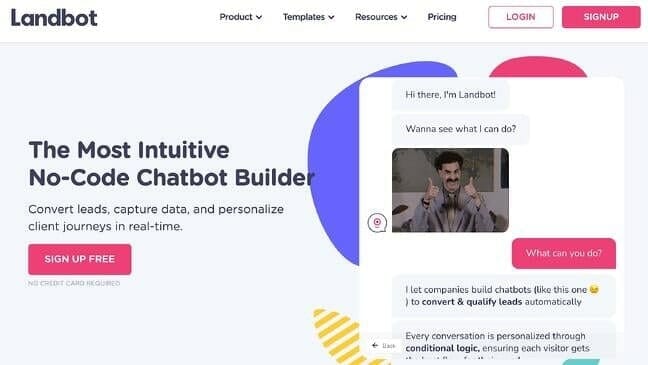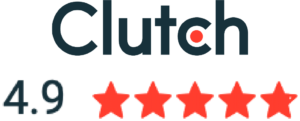
When it comes to running successful Google Ads campaigns, optimizing your landing page is essential for delivering conversions. A well-crafted landing page should be tailored to the audience and focus on providing a clear call-to-action (CTA)
To help you out, this post will discuss some key tips for optimizing a landing page for Google Ads.
But before we dive straight into that, let’s take a moment to understand what exactly a landing page is and what makes it good.
Table of Contents
What Is a Landing Page?
A landing page is a standalone web page where visitors land after clicking on your ad on an advertising platform like Google. Its core purpose is to generate leads, make sales, and/or get people to take some kind of action.
Moreover, a landing page is distinct from other web pages such as home or product pages, which are used to offer general information about the business and its products or services.
Unlike these generic web pages, a dedicated landing page is designed to be distraction-free and has the sole purpose of persuading visitors to take a specific action — such as signing up for an email list or purchasing a product.
What Is a Good Landing Page for Google Ads?
A good landing page for Google Ads is one that meets the needs of your target audience and encourages them to take action. It has a clear and concise headline, provides a compelling CTA, and includes visuals that help illustrate the product or service you’re offering.
Always keep in mind that a good landing page should be focused on a single goal and be:
- Relevant: Supports the ad that it’s linked to.
- Intuitive: Makes it easy for users to complete the desired action.
- Trustworthy: Provides visitors with the assurance they need to take action.
- Smooth: Provides a seamless user experience.
15 Best Practices for Optimizing Landing Pages for Google Ads
Now that you know what a good landing page for Google Ads should look like, let’s discuss 15 key tips for optimizing your landing page:
1. Match the Message of Your Ad
Your landing page should hold true to the message of your ad by using a consistent value proposition and voice. For example, if your ad promised product discounts, then make sure that this is also mentioned on the landing page.
Doing so will create more relevance between the ad and landing page, increasing the chances of conversion.
Here’s how Asana did this.
This is its ad for the search query “Best project management tools”
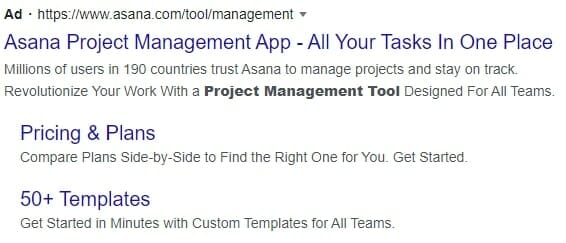
And here is its accompanying landing page.

2. Reduce Loading Time
And short page loading time is essential for a good user experience and should be tested regularly. Slow page loading speeds will drive away potential customers, affecting your conversion rates.
So make sure to minimize your page loading times by limiting the number of images, making use of caching, and compressing content on your website.
You can also use tools such as Google’s PageSpeed Insights to test your page speed and identify any possible improvements.
3. Use High-Quality and Relevant Visuals
It’s important to incorporate clear and attractive visuals that help reinforce the message of your ad.
Visuals like demo videos are especially important when it comes to displaying products, as they help visitors get an idea of what the product looks like and understand its features.
For service-based businesses, visuals like images and short videos can be used to convey the message in a more engaging manner.
Here’s how Landbot went creative about using a picture to explain what their product is about!
4. Showcase Your USP
Your USP (unique selling proposition) is what differentiates you from your competitors.
So show your visitors why they should go for your product or service by highlighting the unique features that make it better than others.
This is how Wise showcases its USP (which is that it’s cheaper than sending money through traditional banks)
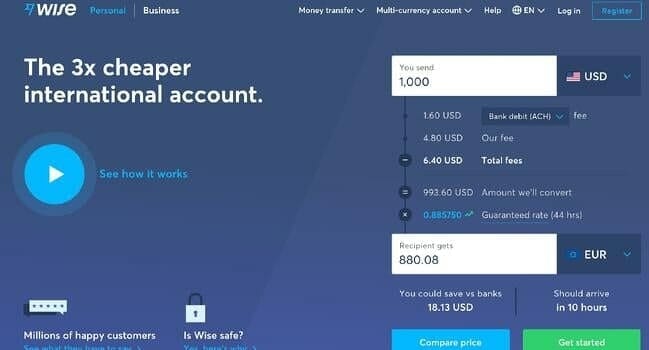
5. Keep the Content Shareable
You can keep the pictures, graphics, and videos on your landing page shareable by adding social media sharing buttons.
This will allow visitors to easily share your content and help you reach a wider audience.
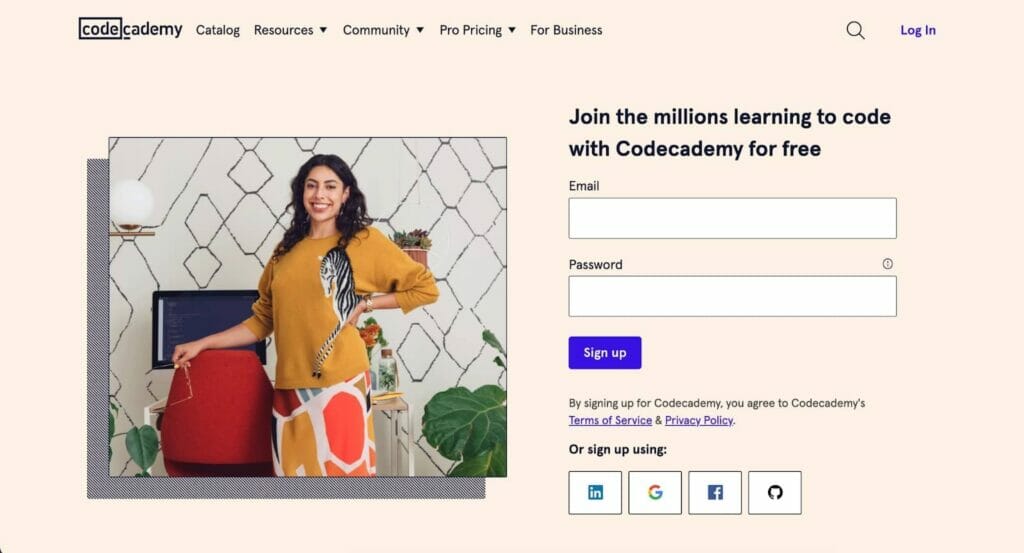
This is an example of how you can place social media buttons on your landing page, even if they aren’t for sharing as in this case.
6. Keep Your CTA Front and Center
Your CTA should be clearly visible and stand out on the landing page. Use contrasting colors, clear fonts, and a prominent placement to draw attention to the CTA and make it easier for visitors to spot.
For a dedicated PPC landing page, it’s best to place your CTA above the fold. That is, visitors should be able to find the CTA without scrolling down, something like this:

7. Make the Sign-Up or Purchase Process Easy
Once visitors have clicked your CTA, make sure the process of signing up or purchasing is easy.
Ensure your forms are short and require minimal information from the user. If you’re selling products, provide a secure checkout process without too many steps.
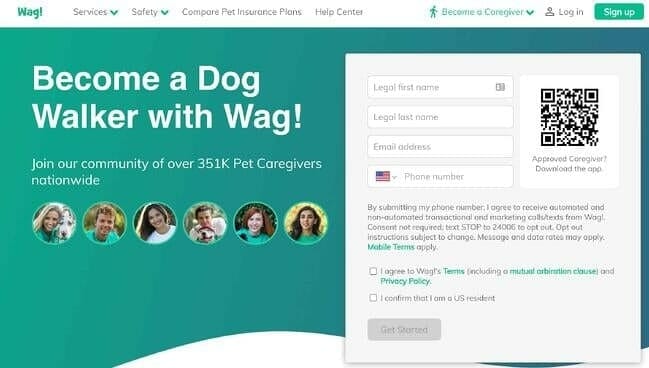
Notice how Wag has made its sign-up process quick and easy by leaving the form directly on its landing page.
8. Provide a Secondary CTA
After scrolling down your page, some of your visitors may still be unsure about taking action. To keep them engaged and provide another chance to convert later, you can include a secondary CTA such as a “Learn More” button.
This will enable those who are interested in finding out more about your product or service to do so before making a decision.

9. Include Authentic Social Proof
Adding social proof elements like customer reviews, testimonials, and awards will let your visitors know that you’re a trusted and reliable business.
These social proof elements lend credibility to your offer and encourage visitors to take action. However, nobody’s going to be convinced by reviews of anonymous people.
So to make the reviews and testimonials persuasive, include real customer photos, job titles, and names with them. This will further help build trust with your potential customers and convince them that other people have had a positive experience with you.
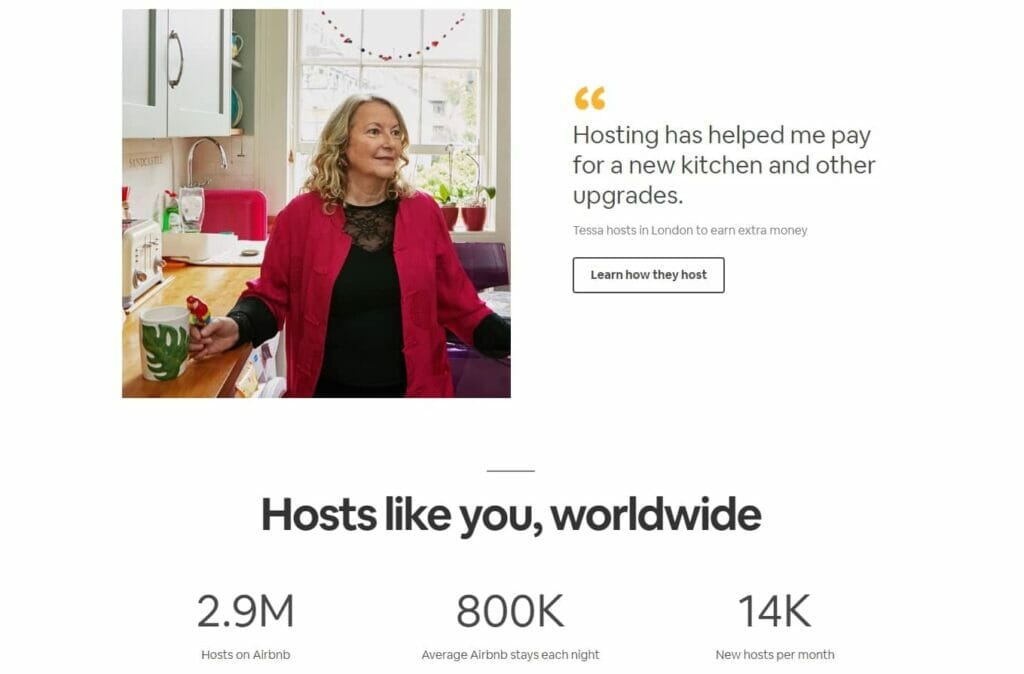
10. Include Your Contact Details
Make sure you display your contact details on your landing page.
This will give visitors a sense of security and show them that your business is willing to provide support and assistance if needed.
You can include a Contact Us section at the bottom of the page with details such as your email address, phone number, and contact form.
11. Make Use of Directional Cues
Directional cues such as arrows, symbols, and other indicators will direct visitors’ attention to the CTA, helping them quickly comprehend the action they should take.
These visuals not only make the landing page design more attractive but also motivate visitors to follow through with the desired action.
Here’s a cute little arrow in action:

12. Optimize for Mobile
With more and more people using mobile devices to search for products, services, and information, it’s important to optimize your landing page for mobile.
You want to make sure it’s easy to read and navigate on mobile by using larger fonts and keeping content blocks nice and compact. Additionally, test your page on different devices to make sure it looks good across all platforms.
13. Write Compelling Headlines and Copy
Your landing page headline should be clear, compelling, and closely related to the ad copy. Additionally, the copy should be concise, persuasive, and written in an active voice.
In addition, make sure not to use excessive jargon or technical terms that visitors might not understand. Instead, use simple language and focus on the benefits of your offer.
Also, your landing page content should be free of any grammatical errors and typos, as these can make you look unprofessional and unreliable.
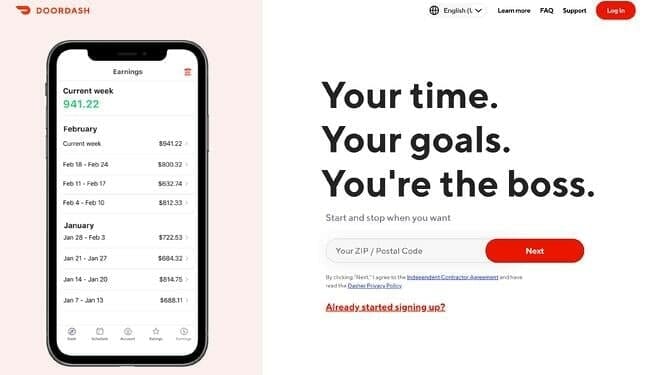
14. Remove Navigation Links
The goal of a landing page is to get people to take the desired action. To that end, it’s important to remove all the navigation links from your page, except for those that link to a privacy statement and terms and conditions.
This will ensure visitors stay focused on the offer and prevent them from being distracted by other pages of your website.
15. Analyze and Test
The best way to optimize your landing page is to put it through rigorous A/B testing. Start by testing small elements like headlines and CTA copy to ensure they are engaging enough. Then, move on to bigger and more important elements like images and videos and check to see what works best.
Once you have a winning combination, analyze the performance of your page regularly and tweak it based on Google Analytics insights.
Why Is Landing Page Optimization Important?
These were all great tips to help you optimize your landing page for Google Ads. However, at this point, you might be thinking, “Okay, this is great but why do I even have to go through all this trouble to optimize my Google ads landing page?”
Here’s why:
When you optimize your landing, you’re essentially improving the landing page experience for users. In other words, you’re making it easier for your visitors to quickly understand your offer and take action. This helps improve conversions & sales and ultimately leads to a better return on your investment.
Other than this, landing page optimization also helps improve your ad performance by:
1. Decreasing bounce rate: When you’ve tailored your landing page for your target audience and made it easier for your visitors to take action, they are more likely to stay on your page. This reduces the bounce rate (people leaving your page immediately after opening it) and increases the time spent per visitor on your website.
2. Improving Quality Score and helping your ads rank higher: When it comes to calculating your Quality Score, Google focuses heavily on the relevance of your landing page. By optimizing the page to make it more pertinent to your ads and keywords, you’ll have a highly relevant landing page in no time. This will result in a higher Quality Score, helping your ad rank better while costing lower per click.
3. Increasing link authority: Link authority is another important factor for search engine rankings. Well-optimized landing pages will be valuable to your site visitors, and they may even share it with their friends or on social media. This will increase the link authority of your landing pages and help them rank higher in organic search results as well.
Landing Page Optimization Simplified
Remember, optimizing your landing page is one of the most effective ways to maximize the success of your Google Ads campaign.
Use the tips we discussed above to make sure that your Google Ads landing pages are up-to-date and relevant, and can attract more visitors and generate more leads and sales.
Good luck!

